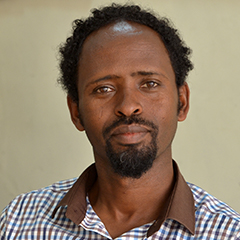Dr. Habtamu Seyoum of Clinton Health Access Initiative shares how investing in oxygen access in Ethiopia gave the country a head start in delivering medical care to COVID-19 patients.
A two-year-old girl gasps for air in the emergency ward.
Her labored breathing, visible from across the room, clearly indicates pneumonia. The nurse in charge confirms the diagnosis. The girl must receive oxygen in the next few hours, or her life is at risk.
It is early 2019, oxygen is unavailable in this health center near Ethiopia’s capital. An ambulance is called to take the little girl to a referral hospital. Everyone hopes she arrives in time.
Such stories are not rare. In our work on childhood pneumonia, we have seen repeatedly how oxygen shortages have made patients suffer and die.
But Ethiopia has been working hard to address such shortages. We were proud to help the Federal Ministry of Health create its first oxygen roadmap in 2016. The ambitious goal was to establish 13 large oxygen-producing plants and enough portable oxygen devices—known as concentrators—to deliver oxygen to patients in every health center in the country.
Ethiopia made impressive gains, procuring more than 3,000 concentrators and establishing five new plants.
Then the pandemic hit. Demand for oxygen far exceeded Ethiopia’s prior goals.
The country has the fourth highest COVID-19 case load in Africa. About one in five people with the virus suffers respiratory distress requiring oxygen treatment, and COVID-19 patients require up to six times as much oxygen as an average ICU patient, a situation that exacerbates existing shortages.
This summer, a friend with COVID-19 required oxygen therapy, but the nearest treatment center was low on oxygen. He was sent to a facility 85 kilometers away.
Eight in ten patients might struggle, as my friend did, to access oxygen. Meanwhile, throughout the health system tens of thousands of newborns, expectant mothers, surgical patients, and children with severe malaria or pneumonia still need oxygen.
So how do we close this oxygen access gap during COVID-19 and beyond?
While staying ahead of the pandemic in Ethiopia has taken a Herculean effort, investments the country already made to address oxygen shortages gave Ethiopia a crucial head start. COVID treatment centers were set up in facilities that received oxygen equipment in the last three years. Policies and treatment guidelines for better hypoxemia management provided a foundation for COVID-19 treatment, and thousands of health workers were already well-versed in oxygen treatments. These investments saved lives in the pandemic.
Beating the pandemic means redoubling efforts to invest in oxygen. Ethiopia has prioritized building oxygen plants to meet hospitals’ needs and procuring concentrators for over 4,500 health centers. Equipment maintenance, training, and clinical mentoring will be key to reliable, available oxygen. Investment from donors and the private sector also are crucial.
Together, we can support Ethiopia to stay ahead of the pandemic by driving wider access to oxygen. In the process, we can build the systems necessary to avert tens of thousands of deaths from surgical complications, noncommunicable diseases, maternal health complications, and childhood illnesses like pneumonia.
View Clinton Health Access Initiative & Murdoch Children’s Research Institute profile ›




